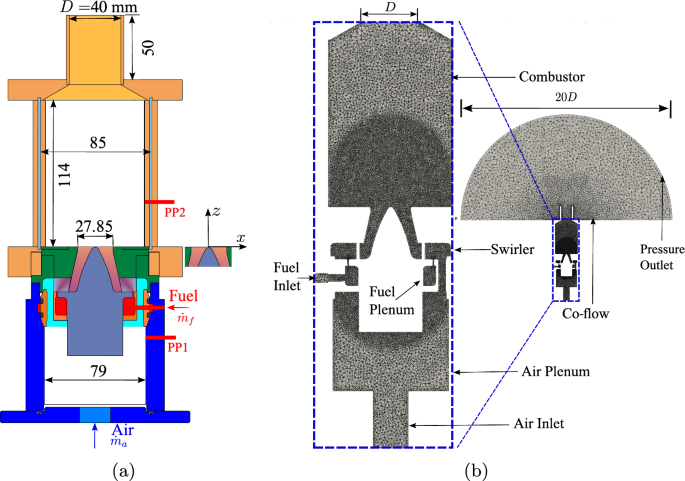Effects of Hydrogen Enrichment on Thermoacoustic and Helical Instabilities in Swirl Stabilised Partially Premixed Flames
Abstract
The effects of hydrogen enrichment on flame and flow dynamics of a swirl-stabilised partially premixed methane-air flame are studied using large eddy simulation. The sub-grid reaction rate is modelled using unstrained premixed flamelets and a presumed joint probability density function approach. Two cases undergoing thermoacoustic oscillations at ambient conditions are studied. The addition of hydrogen modifies both thermoacoustic and fluid dynamical characteristics. The amplitude of the fundamental thermoacoustic mode increases with the addition of 20% hydrogen by volume. A second pressure mode associated with the chamber mode is also excited with the hydrogen addition. Intermittent single, double and triple helical instabilities are observed in the pure methane case, but are suppressed substantially with hydrogen addition. The results are analysed in detail to shed light on these observations. The feedback loop responsible for the thermoacoustic instability is driven by mixture fraction perturbations resulting from the unequal impedances of the fuel and air channels. It is shown that hydrogen addition increases the flame’s sensitivity to these perturbations, resulting in an increase in amplitude. This higher amplitude thermoacoustic oscillation, along with a higher local heat release rate in the presence of hydrogen, is shown to considerably modify the flow structures, leading to a suppression of the helical instabilities.


 求助内容:
求助内容: 应助结果提醒方式:
应助结果提醒方式:


